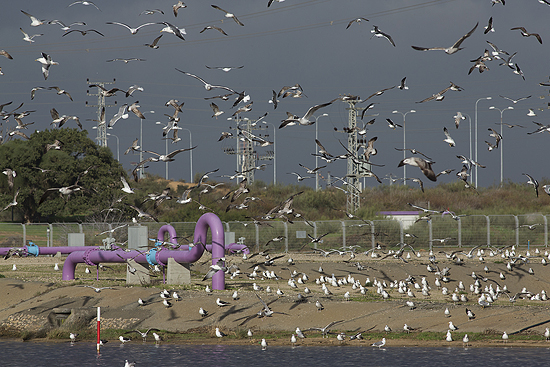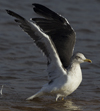 nominate Lesser Black-backed Gull (L. f. fuscus)
nominate Lesser Black-backed Gull (L. f. fuscus)
(last update:
Amir Ben Dov (Israel)
Hannu Koskinen (Finland)
Mars Muusse (the Netherlands)
fuscus 1cy July
fuscus 1cy Aug
fuscus 1cy Sept
fuscus 1cy Oct
fuscus 1cy Nov
fuscus 1cy Dec
fuscus 2cy Jan
fuscus 2cy Feb
fuscus 2cy March
fuscus 2cy April
fuscus 2cy May
fuscus 2cy June
fuscus 2cy July
fuscus 2cy Aug
fuscus 2cy Sept
fuscus 2cy Oct
fuscus 2cy Nov
fuscus 2cy Dec
fuscus 3cy Jan
fuscus 3cy Feb
fuscus 3cy March
fuscus 3cy April
fuscus 3cy May
fuscus 3cy June
fuscus 3cy July
fuscus 3cy August
fuscus 3cy Sept
fuscus 3cy October
fuscus 3cy Nov
fuscus 3cy Dec
fuscus 4cy Jan
fuscus 4cy Feb
fuscus 4cy March
fuscus 4cy April
fuscus 4cy May
fuscus 4cy June
fuscus 4cy July
fuscus 4cy Aug
fuscus 4cy Sept
fuscus 4cy Oct
fuscus 4cy Nov
fuscus 4cy Dec
fuscus ad Jan
fuscus ad Feb
fuscus ad March
fuscus ad April
fuscus ad May
fuscus ad June
fuscus ad July
fuscus ad Aug
fuscus unringed Aug
fuscus ad Sept
fuscus ad Oct
fuscus ad Nov
fuscus ad Dec
Images presented in this section are from Israel, where nominate fuscus is a regular visitor.
Primary moult
The moult sequence in nominate Lesser Black-backed Gull Larus fuscus fuscus was already described by Stresemann & Stresemann in 1966 in Journal für Ornithologie. They described a periodische Staffelmauser, a step-wise moult. Normally, large white-headed gulls in Europe start replacement of the remiges during the breeding season and finish this moult in autumn, prior to their migration.
Stresemann & Stresemann described fuscus as an exception as it doesn't start the remiges moult before arriving at the wintering grounds in Africa and the Mediterranean. For a long-distance migrant like fuscus, this seems to be a suitable strategy. This pattern can also be found in long-distance migrants like Terns (Sternidae).
Stresemann & Stresemann examined skin collections and failed to find any adult L. f. fuscus originating from the breeding or autumn migratory range that was in active primary moult. Therefore they presumed the entire moult stage takes place on the wintering grounds. Adult birds on migration had been collected (Rossitten Bird Observatory, Russia) and these birds confirmed the theses: they must have suspended moult, as Heinroth (1928, Die Vögel Mitteleuropas) concluded: adult fuscus doesn't show active primary moult on migration. They either suspend moult or do not commence moult before arrival on the wintering grounds.
However, there are a few museum skins that do show adult fuscus in primary moult: the Zoological Museum of Helsinki (not visited by the Stresemanns in 1966) has 21 skins of summer / early autumn birds: 8 are showing moult in the primaries. The museums of Copenhagen and Tring have 10 skins in collecting from the same period: one is showing active primary moult.
The last decades, the general idea about the renewal of the primaries in adult fuscus has been changed slightly. Field research showed that a small majority (up to 60% in southern Sweden) of the adult fuscus have started to replace the inner one or two primaries on the breeding ground by late August. This primary moult is suspended until arrival at the tropical wintering grounds. Fuscus complete their primary moult in February and March, just before leaving again to the breeding grounds in Scandinavia and northern Russia. By March, the inner primaries may in some birds included in the primary moult, in a second wave. This seems to be a common feature in especially sub-adult birds.
As soon as birds arrive in S Europe and Africa, primary moult is started (again) and a complete moult takes place, normally in the ordinary sequence as it is found in many large white-headed gull taxa in N Europe. The table below illustrate the moult scores for Israelian birds, photographed by Amir Ben Dov.
Table adult December
Table showing old and new primaries in adult fuscus in December (data from 01-20 January); data for Israel (2008-2011).
P6 new = P6 longest new primary; it exceeds the previous primary in length (so P6 new / fully grown, only from the moment when it is longer than P5).
| Primary moult in adult fuscus in mid-December, Israel. Data by Amir Ben Dov: | ||||||
| score | P7-P10 old | P8-P10 | P9-P10 | P10 | 0 old | n: |
| P6 f.g. | 1 | 1 | 3 | 1 | . | 6 |
| P7 f.g. | . | . | 2 | 2 | . | 4 |
| P8 f.g. | . | . | . | . | 3 | 3 |
| n: | 1 | 1 | 5 | 3 | 3 | `3 |
| f.g. (fully grown): defined as the longest new primary present in the folded wing. Thus, when P8 already slightly exceeds the length of P7, we note 'P8 fully grown'. In single observations, it would otherwise be very hard to tell if a feather still has to grow a fraction longer or not. P7-P10 old: P7 still present and old, as are the outer primaries. |
||||||

Drop-catch behaviour is play in herring gulls, Larus argentatus
Jennifer R. Gamblef and Daniel A. Cristolf
IN: Animal Behaviour, Volume 63, Issue 2, February 2002, Pages 339-345
Abstract
Behaviours with no apparent adaptive function are sometimes described as play without rigorous testing of alternative explanations. One such behaviour is the repeated dropping and catching of objects by birds. We observed drop-catch behaviour by herring gulls over 3 years at a site where the birds frequently dropped clams to break them on hard surfaces below. We tested unique suites of predictions from three hypotheses, that the drop-catch behaviour is play, that it functions to expose potential kleptoparasites, or that it serves to reposition clams before foraging drops. We tested data from 72 drop-catch series and 504 typical foraging drop series to determine which suite of predictions most closely matched our observations. As predicted if the behaviour were play, drop-catches were performed more by younger birds, not necessarily over a hard substrate, and sometimes with nonfood objects. Clams that were subjected to drop-catches were generally not repositioned or eaten. These results suggest a motivation for drop-catching that is distinct from foraging. Finally, drop-catches were more frequent when it was warm and when there were high winds, also consistent with the play hypothesis. Drop-catch behaviour closely matched the predictions of the play hypothesis and we were able to reject the two alternative explanations.

Larus group December 21 2012, Ashdod, Israel. Picture Amir Ben Dov. 1700 large gulls congregate at the penetration ponds.
 L. f. fuscus adult CV03 December 08 2009, Ashdod, Israel. Picture: Yoav Perlman. Bird seen February as well.
L. f. fuscus adult CV03 December 08 2009, Ashdod, Israel. Picture: Yoav Perlman. Bird seen February as well. L. f. fuscus C0PE December 08 2009, Ashdod, Israel. Picture: Yoav Perlman.P10 old. Seen again in January 2010.
L. f. fuscus C0PE December 08 2009, Ashdod, Israel. Picture: Yoav Perlman.P10 old. Seen again in January 2010. L. f. fuscus 13CY-16CY C5P4 December 2009 & 2012, Ashdod, Israel. Picture: Amir Ben Dov.
L. f. fuscus 13CY-16CY C5P4 December 2009 & 2012, Ashdod, Israel. Picture: Amir Ben Dov. L. f. fuscus 13cy HT-168225 February 2011 & December 2012, Ashdod, Israel. Picture: Amir Ben Dov.
L. f. fuscus 13cy HT-168225 February 2011 & December 2012, Ashdod, Israel. Picture: Amir Ben Dov. L. f. fuscus 16cy HT-203790 December 06 2013, Ashdod, Israel. Picture: Amir Ben Dov.
L. f. fuscus 16cy HT-203790 December 06 2013, Ashdod, Israel. Picture: Amir Ben Dov. L. f. fuscus adult J52E December 08 2009, Ashdod, Israel. Picture: Yoav Perlman.Bird from Norway.
L. f. fuscus adult J52E December 08 2009, Ashdod, Israel. Picture: Yoav Perlman.Bird from Norway. L. f. fuscus adult December 11 2010, Ashdod, Israel. Picture: Amir Ben Dov. Primary moult almost finished: P8 fg.
L. f. fuscus adult December 11 2010, Ashdod, Israel. Picture: Amir Ben Dov. Primary moult almost finished: P8 fg. L. f. fuscus adult December 06 2013, Ashdod, Israel. Picture: Amir Ben Dov. Primary moult: P1-P4 new, P5 growing, P7-P10 old. Active moult in tail.
L. f. fuscus adult December 06 2013, Ashdod, Israel. Picture: Amir Ben Dov. Primary moult: P1-P4 new, P5 growing, P7-P10 old. Active moult in tail. L. f. fuscus adult December 06 2013, Ashdod, Israel. Picture: Amir Ben Dov. Primary moult: P1-P6 new, P7-P8 growing, P9-P10 old. Active moult in tail almost finished.
L. f. fuscus adult December 06 2013, Ashdod, Israel. Picture: Amir Ben Dov. Primary moult: P1-P6 new, P7-P8 growing, P9-P10 old. Active moult in tail almost finished. L. f. fuscus adult, December 23 2011, Ashdod, Israel. Picture: Amir Ben Dov. P6/P9.
L. f. fuscus adult, December 23 2011, Ashdod, Israel. Picture: Amir Ben Dov. P6/P9. L. f. fuscus adult, December 23 2011, Ashdod, Israel. Picture: Amir Ben Dov. P6/P9.
L. f. fuscus adult, December 23 2011, Ashdod, Israel. Picture: Amir Ben Dov. P6/P9. L. f. fuscus adult, December 23 2011, Ashdod, Israel. Picture: Amir Ben Dov. P7/-.
L. f. fuscus adult, December 23 2011, Ashdod, Israel. Picture: Amir Ben Dov. P7/-. L. f. fuscus adult, December 23 2011, Ashdod, Israel. Picture: Amir Ben Dov. P8/-.
L. f. fuscus adult, December 23 2011, Ashdod, Israel. Picture: Amir Ben Dov. P8/-. L. f. fuscus adult, December 21 2012, Ashdod, Israel. Picture: Amir Ben Dov. P7/-.
L. f. fuscus adult, December 21 2012, Ashdod, Israel. Picture: Amir Ben Dov. P7/-. L. f. fuscus adult, December 21 2012, Ashdod, Israel. Picture: Amir Ben Dov. P6/P9.
L. f. fuscus adult, December 21 2012, Ashdod, Israel. Picture: Amir Ben Dov. P6/P9. L. f. fuscus adult, December 14 2013, Ashdod, Israel. Picture: Amir Ben Dov. P6-P10 old.
L. f. fuscus adult, December 14 2013, Ashdod, Israel. Picture: Amir Ben Dov. P6-P10 old. L. f. fuscus adult, December 21 2012, Ashdod, Israel. Picture: Amir Ben Dov. P7/P10.
L. f. fuscus adult, December 21 2012, Ashdod, Israel. Picture: Amir Ben Dov. P7/P10. L. f. fuscus adult, December 21 2012, Ashdod, Israel. Picture: Amir Ben Dov. P7/P10.
L. f. fuscus adult, December 21 2012, Ashdod, Israel. Picture: Amir Ben Dov. P7/P10. L. f. fuscus adult December 06 2013, Ashdod, Israel. Picture: Amir Ben Dov.
L. f. fuscus adult December 06 2013, Ashdod, Israel. Picture: Amir Ben Dov. L. f. fuscus adult, December 21 2012, Ashdod, Israel. Picture: Amir Ben Dov. P7/-.
L. f. fuscus adult, December 21 2012, Ashdod, Israel. Picture: Amir Ben Dov. P7/-. L. f. fuscus adult, December 21 2012, Ashdod, Israel. Picture: Amir Ben Dov. P8/-.
L. f. fuscus adult, December 21 2012, Ashdod, Israel. Picture: Amir Ben Dov. P8/-. L. f. fuscus adult, December 21 2012, Ashdod, Israel. Picture: Amir Ben Dov.
L. f. fuscus adult, December 21 2012, Ashdod, Israel. Picture: Amir Ben Dov.